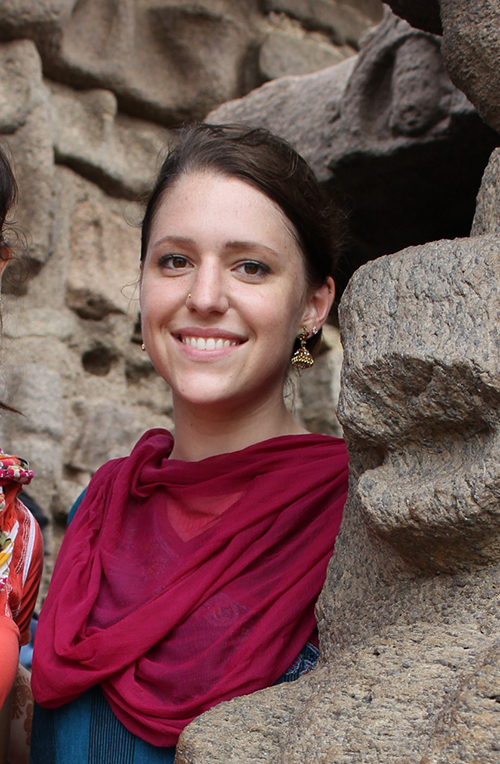Kimberly is a South Asia Studies and Religious Studies double major with a Tamil language focus and a minor in International Development. Her general research interests include material religion, religion in sustainable development, and gender and religion. During her junior year, she lived in Tamil Nadu, India researching street temples and in Batticaloa, Sri Lanka conducting ethnographic fieldwork on negotiations of ethnic tension through beauty and ornament in post-war society. Kimberly’s honors thesis, Color-Coding the Margins, builds on her research in Sri Lanka and argues for a broad conception of “public” that includes feminized and marginalized constructors such as beauty and ornament. She received the Gelfman International Summer Research Grant and South Asia Studies Grant for her research. In addition to the Penn Humanities Forum, Kimberly is also a Penn Program for Democracy, Constitutionalism, and Citizenship fellow, Foreign Language and Area Studies fellow, Boren Scholar, CURF Research Peer Advisor, Penn Society for International Development member, and a 2015 Dean Scholar.
Kimberly Kolor
Andrew W. Mellon Undergraduate Fellow in the Humanities
2014—2015 Forum on Color
Kimberly Kolor
2014-15 Undergraduate Humanities Forum Steering Committee
Religious Studies, South Asia Studies
Color-coding the Margins: Personal & Public Beautification and Community Identity in Eastern Sri Lanka
In post-conflict Sri Lanka, communal tensions continue to be negotiated, contested, and remade. Color codes virtually every aspect of daily life in salient local idioms. Scholars rarely focus on the lived visual semiotics of local, everyday exchanges from how women ornament their nails to how communities beautify their open—and sometimes contested—spaces. I draw on my ethnographic data from Eastern Sri Lanka and explore ‘color’ as negotiated through personal and public ornaments and notions of beauty with a material culture focus. I argue for a broad view of ‘public,’ which includes often marginalized and feminized public modalities. This view also explores how beauty and ornament are salient technologies of community and cultural authenticity that build on histories of ethnic imaginaries.



